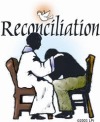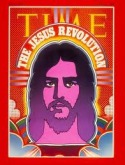 10 Ways The Church Might Change: Point 4 – Part I
10 Ways The Church Might Change: Point 4 – Part I
[In previous blogs I have outlined 10 possible changes the Church may face in the future. This is point 4 in the series: Relationships will replace religion. Religious programs, westernized theology, and methodology will be challenged, torn down and replaced by the global movement of the Holy Spirit bringing unity, not division. Denominations and religious sects will vanish, being replaced through relationships with the Holy Spirit and between brothers and sisters in the Lord. The Apostolic will return ushering unity in theology, purpose, direction, and doctrine. Truly there has been and is only ONE Church, the body of Christ, the priesthood of believers in Jesus Christ.]
 The Facebook generation is all about relationships. My generation, the Mr. Roger’s generation sang “Won’t you be my neighbor” with a regional, community, neighborly view of the world. The Facebook generation asks, “Won’t you be my friend” with a world-wide linear view of the world. Being “part” of something and being accepted is very important to this generation. Relationships are of the essence. When in your twenties, relationships are key to one’s social life, for one faces friendships, break ups, relational commitments that are short term and long term, and acceptance and rejection at all different social levels. Everyone wants to be a part of something and accepted by someone.
The Facebook generation is all about relationships. My generation, the Mr. Roger’s generation sang “Won’t you be my neighbor” with a regional, community, neighborly view of the world. The Facebook generation asks, “Won’t you be my friend” with a world-wide linear view of the world. Being “part” of something and being accepted is very important to this generation. Relationships are of the essence. When in your twenties, relationships are key to one’s social life, for one faces friendships, break ups, relational commitments that are short term and long term, and acceptance and rejection at all different social levels. Everyone wants to be a part of something and accepted by someone.
So if relationships are the key to understanding this generation, then the church needs to look away from things that appear to them only as being religious and begin to establish relationships instead. Today’s 20-30 year old really doesn’t care if a church is pre-tribulation, post-trib, or mid-trib in its eschatology, or if it is Calvinistic or Armenian in its orthodoxy. They can’t tell you the differences that make Lutheran, Methodist, Baptist, Pentecostal, Evangelical, Fundamental, Eastern Orthodox, or Roman Catholic unique and separate in theology and make up.  In fact, they don’t care, because it is all religion to them, yet the church still spends much of its energy and assets in redefining their labels, heritages, and traditions. When is the church going to realize that it is all religion? No one wants to get involved in the inner bickerings of religious sects, but one has to if drawn into local church settings. What people want is relationships over religious activities.
In fact, they don’t care, because it is all religion to them, yet the church still spends much of its energy and assets in redefining their labels, heritages, and traditions. When is the church going to realize that it is all religion? No one wants to get involved in the inner bickerings of religious sects, but one has to if drawn into local church settings. What people want is relationships over religious activities.
Looking back over my 50 years as a Christian, religious activities have come and gone. The events are only remembered if recorded as part of a local church’s history. On the other hand Christian relationships established over the years still remain. That says something about relationships.
The internet and the world-wide-web have forced us to look again at relationships and church. Through internet web sites you can get all the religion you want: church web sites of services, programs, and times, blogs and opinions about theology, access to church libraries even with ancient manuscripts, videos and podcasts of sermons, even Christian chat rooms for fellowship, but the internet now also offers advancement in technical communication skills through emails, twittering, texting, emailing, Skyping, FaceTiming, Google +’ing, etc. Relationships from the past are easily restored. I now play “Words With Friends”, alias Scrabble in old term technology, with old college friends, retirees, friends living hundreds of miles away, and even relatives. I don’t have to have them “over to my house” to play “board games”; I can do it on my computer, Kindle, Ipad, or smart phone while watching TV, talking to my wife, and struggling with a conventional crossword puzzle while sitting in my lazyboy chair in my own livingroom.
I now play “Words With Friends”, alias Scrabble in old term technology, with old college friends, retirees, friends living hundreds of miles away, and even relatives. I don’t have to have them “over to my house” to play “board games”; I can do it on my computer, Kindle, Ipad, or smart phone while watching TV, talking to my wife, and struggling with a conventional crossword puzzle while sitting in my lazyboy chair in my own livingroom.
The way high-tech America does relationships is being redefined. It is hard for me to imagine, but even if someone comes “over to my house”, they sit on different chairs “texting” one another while in the same room! Looking face to face in someone’s eyes is not a pre-requisite that you have their attention.
So if the Church wants to reach the “world” for Jesus, it will have to re-examine how it is going to communicate with that world to be effective. Global Revival will be communicated in a different format than my grandparents could even imagine when listening to radio preachers or watching a Billy Graham Crusade on their television. The internet only relays data, information, electronically across the world. The Holy Spirit can do more drawing like minded, kindred spirits, toward one another. That’s true fellowship, true relationships.
The way Christians “relate” to one another is the key to revival. My earlier blogs about I John 3:16 and the relationship of “laying down your life for your brethren” addresses this issue. Christians must also figure out how to “relate” to non-Christians so they do not come across as “religious” but “relational” by providing grace, mercy, and unconditional love to those they communicate with.
 Bottom Line: Church – We got to dump all our religious garbage that the world really doesn’t care about, nor find appealing, nor want in their lives, and start building relationships. We talk about having a “personal relationship” with Jesus, but what kind of “personal relationships” do we have with other Christian and non-Christian brothers and sisters. The answer to that question will show us where we are in being willing to be part of a global revival.
Bottom Line: Church – We got to dump all our religious garbage that the world really doesn’t care about, nor find appealing, nor want in their lives, and start building relationships. We talk about having a “personal relationship” with Jesus, but what kind of “personal relationships” do we have with other Christian and non-Christian brothers and sisters. The answer to that question will show us where we are in being willing to be part of a global revival.













































































